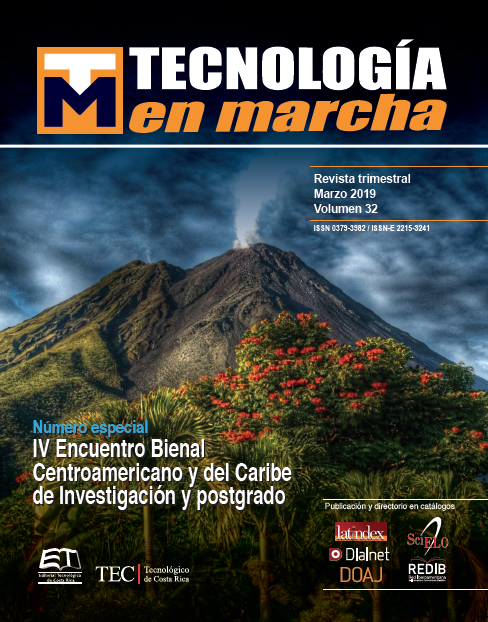Locating seismo-volcanic signals in Turrialba Volcano (Costa Rica) using Python and Advanced Computing: a case of multidisciplinary collaboration for scientific development
Main Article Content
Abstract
Low frequency seismo-volcanic signals are generated by the internal motion of fluids like magma, gases and water. They commonly occur before or together with erupting activity. Therefore, there study is fundamental for monitoring volcanic activity and assessment of volcanic risk. Nevertheless, because of their source complexity, it’s not possible to use the classical procedures for seismic location, which were developed for locating the more common tectonic earthquakes. Moreover, the volcanic edifice heterogeneity modifies the waveform of seimo- volcanic signals, making the process of finding its location more challenging. Hence, signals must be processed using other methods that, because of their computational complexity, require advanced computing platforms (supercomputers), specially if real-time processing is required. However, seismic observatories of volcano monitoring in Central America have limited resources and may not afford in-house professional software developers. The present work analyzes a study case about a collaborative experience between specialists in volcano seismology and in advanced computing. We developed a computational platform to locate seismo-volcanic signals in Turrialba Volcano. Our principal conclusion is that the creation of multidisciplinary collaboration networks allow resource maximization to tackle and overcome many limitations common in our context (lack of human resource, technology, low budget, among others).
Article Details
Los autores conservan los derechos de autor y ceden a la revista el derecho de la primera publicación y pueda editarlo, reproducirlo, distribuirlo, exhibirlo y comunicarlo en el país y en el extranjero mediante medios impresos y electrónicos. Asimismo, asumen el compromiso sobre cualquier litigio o reclamación relacionada con derechos de propiedad intelectual, exonerando de responsabilidad a la Editorial Tecnológica de Costa Rica. Además, se establece que los autores pueden realizar otros acuerdos contractuales independientes y adicionales para la distribución no exclusiva de la versión del artículo publicado en esta revista (p. ej., incluirlo en un repositorio institucional o publicarlo en un libro) siempre que indiquen claramente que el trabajo se publicó por primera vez en esta revista.

